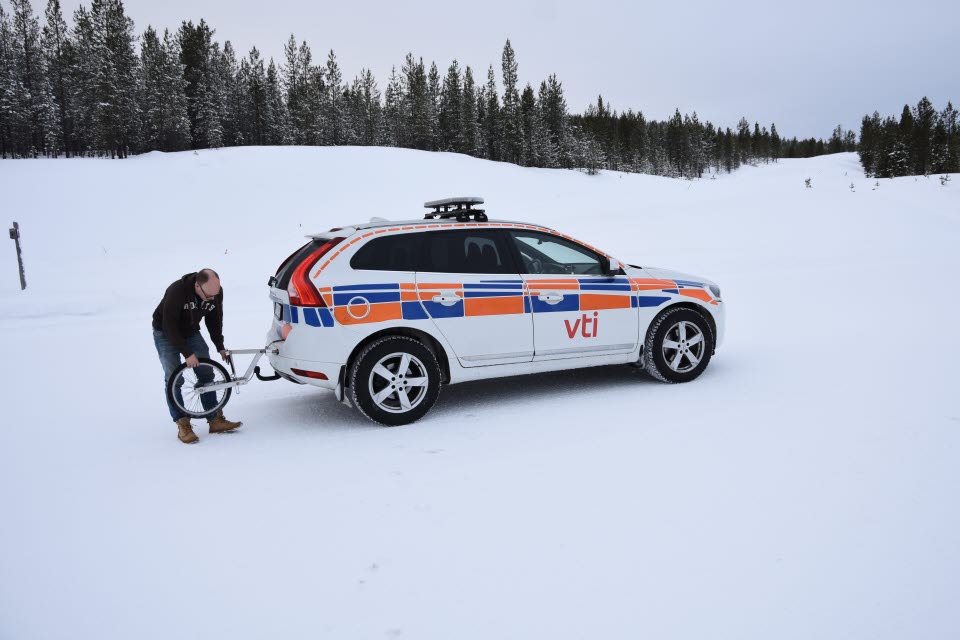"Not roadworthy": VTI does not recommend the use of all-weather tyres

All-weather tyres have significantly poorer characteristics than regular winter and summer tyres in all conditions. The traction on icy road surfaces is so poor that the tyres cannot be seen as roadworthy for Swedish winter roads. This is shown in a new report from VTI and Folksam.
In the study, 14 different all-weather tyres were tested on ice, snow, and bare roads and compared with both Nordic and European non-studded winter tyres as well as summer tyres. The tests were conducted in 2022 at Nokia’s test track just outside of Ivalo in Northern Finland as well as at Anderstorp race track in Sweden. The aim was not to identify the best or worst tyres, but rather to investigate how all-weather tyres perform in different conditions.
Of the 14 tyres tested, 11 were approved for winter-use and labelled with the “Alpine symbol” (Three-Peak Mountain Snowflake symbol). Three of the tyres were not approved for winter-use but were, despite this, readily available for purchase on-line in Sweden.
The tests showed large differences in braking traction for all of the tested surfaces.
On snow, the braking distances for all-weather tyres approved for winter-use were approximately 10-30 percent longer than for the Nordic reference tyre. The average value was 15 percent. The all-weather tyres that were not approved for winter-use had up to 40 percent longer braking distances.
On icy surfaces, the braking distances were 25-50 percent longer than for the Nordic reference tyre, with an average value of just over 30 percent. The all-weather tyre with the poorest performance on icy surfaces was on par with a summer tyre and had a braking distance 50 percent longer than the reference tyre.
On bare roads in summer conditions, the braking distances were 5-30 percent longer on both wet and dry asphalt compared with the summer reference tyre.
“In VTI’s opinion, it is inappropriate to use all-weather tyres in Sweden. Motorists should use winter tyres in the winter and summer tyres in the summer. We conclude that the poor tyre traction in icy conditions for all-weather tyres means that they are not a roadworthy alternative on Swedish roads during the winter”, says Mattias Hjort, senior researcher at VTI who has led the study.
While all-weather tyres in general showed poor results, there were large differences in braking traction for the different tyres. Some of the tyres had a similar performance to a European non-studded winter tyre, and others were more like a summer tyre. This seems to have been a conscious decision from the different manufacturers.
“For a motorist who can avoid icy conditions and, despite the risks, still chooses to use all-weather tyres, it is important to be aware of the large differences between tyre models. The choice of tyres should be made with careful consideration of the tyre's specific characteristics”, says Mattias Hjort.
The tests, that were funded by Trafikverket and Skyltfonden, also showed a correlation between low rolling resistance and poor traction in icy conditions. This indicates that measures to reduce rolling resistance can have a negative impact on braking distances for this type of tyre.
Text: Mikael Sönne
Translation: CBG
Link to the report (in Swedish): Test av åretruntdäck: Väggrepp på is och snö samt barmark (DIVA, 2023) External link.
External link.
Don't miss out on VTI's news – subscribe now!
Stay informed with the latest research and news from VTI. Sign up for newsletters, sent by e-mail four times a year.
